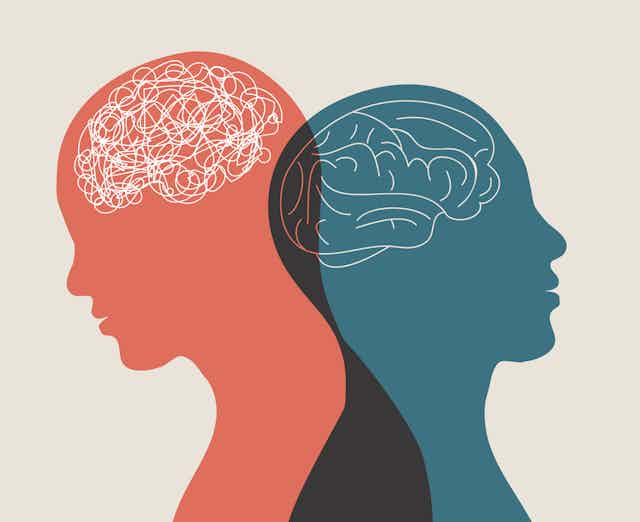Psych Treatment: A Comprehensive Guide to Outcomes and techniques

Cognitive-Behavioral Treatment
Cognitive-Behavioral Therapy (CBT) is an extensively used psychotherapeutic method that focuses on recognizing and customizing dysfunctional reasoning and habits patterns. Established in the 1960s by Aaron T. Beck, CBT incorporates behavior and cognitive theories to address numerous mental wellness problems, consisting of depression, anxiousness, and stress-related disorders. The property of CBT is that maladaptive thoughts add to emotional distress and maladaptive habits. By restructuring these ideas, individuals can accomplish significant renovations in their psychological well-being and everyday performance.
Techniques such as cognitive restructuring, exposure treatment, and skill-building exercises are typically employed. Cognitive restructuring entails tough and changing negative idea patterns, while direct exposure therapy aims to decrease concern and anxiousness with gradual direct exposure to been afraid objects or scenarios.
Evidence-based research study supports the efficiency of CBT for a vast array of psychological problems - Best Psychologist in Delhi. Its emphasis on ability acquisition and self-help strategies equips clients to proceed progress independently after therapy ends. The flexibility and performance of CBT have made it a cornerstone in modern psychotherapeutic practice
Psychodynamic Approaches
Rooted in the very early theories of Sigmund Freud, psychodynamic strategies focus on discovering the unconscious mind and its impact on habits and feelings. These methods intend to uncover surprise thoughts and feelings that might be driving maladaptive behaviors and emotional distress. Central to this approach is the idea of internal conflict, often coming from unresolved past experiences, specifically those from youth.
Therapists making use of psychodynamic techniques utilize numerous key techniques, consisting of cost-free organization, where clients are urged to speak easily to disclose subconscious product, and dream evaluation, which interprets the concealed web content of dreams. Furthermore, the expedition of transfer and countertransference characteristics within the therapeutic connection is vital. These communications can provide insights into the patient's interior globe and relational patterns.
Psychodynamic treatment is usually longer-term contrasted to various other methods, offering a detailed and deep understanding of the person's subconscious. Study shows that it can be particularly effective for complex mental health issues, such as character conditions and chronic anxiety. By promoting self-awareness and emotional insight, psychodynamic therapy looks for to bring subconscious product to awareness, making it possible for people to attain purposeful and long-term adjustment in their lives.
Humanistic Methods
Building on the foundations laid by psychodynamic approaches, humanistic techniques supply an unique point of view concentrated on private potential and self-actualization. Originating in the mid-20th century, these strategies focus on the intrinsic goodness and development possibility of individuals, emphasizing a holistic sight of human experience. Secret figures such as Carl Rogers and Abraham Maslow have actually substantially affected this therapeutic approach, which incorporates approaches like client-centered treatment and Gestalt treatment.
Client-centered treatment, developed by Rogers, plays a crucial function in humanistic strategies. The therapist's duty is more of a facilitator than an authority, urging clients to harness their internal sources for healing.
Gestalt treatment, another important humanistic method, emphasizes present moment recognition and the integration of body and mind. By concentrating on the "here and currently," customers acquire better insight into their existing feelings and behaviors. Methods such as role-playing and led visualization are commonly employed to help clients Full Report obtain a deeper understanding of themselves, ultimately causing boosted self-awareness and satisfaction.
Integrative Therapies
Integrative treatments represent a synthesis of different healing techniques tailored to satisfy the one-of-a-kind needs of each client. This strategy recognizes the intricacy of human psychology and the multifaceted nature of mental health and wellness problems. By incorporating aspects from various schools of psychotherapy-- such as cognitive-behavioral therapy (CBT), psychodynamic therapy, and humanistic methods-- integrative treatments use an even more all natural and adaptable therapy standard.
Experts of integrative treatment analyze each client's specific needs, symptoms, and individual history to design a customized therapy strategy. This customized technique improves the capacity for restorative success by dealing with the root causes of psychological distress and advertising total wellness. Methods might include mindfulness workouts, cognitive restructuring, and psychological processing, anchor each selected to target different aspects of the client's concerns.
Additionally, integrative therapies highlight the healing partnership, checking out the client-therapist bond as a critical part of efficient treatment. This partnership promotes a supportive setting where clients feel secure to check out and address their worries. The versatility of integrative treatments makes them appropriate for a broad variety of conditions, consisting of stress and anxiety, depression, injury, and interpersonal troubles, thus raising their applicability and efficiency in varied medical setups.

Measuring Treatment Results
Reviewing the efficiency of psychotherapy is crucial for both customers and clinicians to make certain that the treatment is generating the preferred end results. To accomplish this, numerous methods and devices are employed to determine treatment outcomes methodically. Standard assessment tools, such as the Beck Depression Stock (BDI) and the Generalized Anxiety Problem 7 (GAD-7), supply measurable information on sign extent and modifications with time.
In addition to standardized devices, qualitative methods like client self-reports and professional interviews provide important understandings into the personal experiences and regarded progression of clients. On a regular basis set up assessments, normally at the beginning, omphalos, and end of treatment, aid in tracking the trajectory of renovation or identifying areas needing modification.
Result dimension is not restricted to signs and symptom decrease; it additionally encompasses functional improvements in life, such as much better social connections, increased job efficiency, and boosted total health. Modern advancements in digital health have presented mobile applications and on-line systems that assist in real-time tracking and comments, additionally fine-tuning the evaluation process.
Eventually, an extensive method to measuring therapy end results ensures that restorative interventions are efficient, efficient, and customized to fulfill the specific requirements of clients, thereby maximizing the total restorative experience.
Conclusion
Humanistic methods concentrate on personal growth and self-actualization, while integrative treatments combine several methods for tailored therapy plans. Assessing therapy outcomes with standard assessments and qualitative techniques makes certain an extensive understanding of performance, ultimately directing customers towards enduring mental health and wellness renovations.
From the structured method of Cognitive-Behavioral Treatment (CBT) to the deep expedition of the subconscious in psychodynamic treatment, each method brings distinct advantages. Its focus on skill procurement and self-help techniques equips why not find out more customers to proceed progression independently after therapy concludes (Best Psychologist in Delhi). Secret figures such as Carl Rogers and Abraham Maslow have dramatically affected this therapeutic technique, which encompasses methods like client-centered therapy and Gestalt therapy
